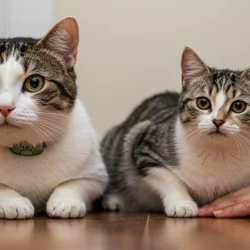5 Tips for Teaching Children to Play Nice With Animals
It’s only natural that children would be drawn to animals. Whether they’re soft, fluffy, and adorable or scaly and immersed in water, animals can provide hours of amusement for curious kids who are trying to understand the myriad ways in which the world works. And yet, their natural penchant for adventure and exploration doesn’t necessarily bode well for the health and safety of pets in your home. Kids are prone to pull, poke, and otherwise agitate animals, and while this harassment is certainly no fun for your pets, it could turn violent when animals defend themselves from these perceived attacks. Still, you can have both kids and pets in your home and all can exist harmoniously when you take the time to teach your children the proper way to interact with animals. Here are a few tips that will help to turn your kids into responsible caregivers and loving companions to their pets.
Lead by example. You are the first and most important role model for your children, so it is imperative that you show them how to behave around animals through your own actions. If you’re prone to yelling at your dog when it uses your home as a bathroom, chews on your furniture, or fails to obey commands, then you shouldn’t be surprised when you see kids emulating your bad behavior. Keep in mind that pets don’t understand when you yell at them, so you’re wasting your breath anyway. This is a terrible way to train animals and a great way to make them fear you. But it’s not a huge leap for kids to go from yelling to other negative behaviors like hitting, so you need to curb this activity immediately, or prevent it in the first place by addressing your own bad habits and learning how to treat pets in an appropriate manner.
Explain that animals are fragile. Children love to hug, squeeze, drop, and otherwise mistreat their stuffed animals, so they might not immediately understand the difference between their toys and the living creatures that enter your household as pets. For this reason it’s a good idea to explain to them that animals are fragile and that they can be hurt through mistreatment.
Instill empathy. The best way to make kids understand the harm they could do to their pets is to find a way to instill a sense of empathy in them. You might remind them of a time they were hurt or afraid and tell them that’s how animals feel when people yell at them or pull their tails. Or you could ask how they might feel if somebody grabbed their ears or dragged them around by a collar. This may upset sensitive children, but it could be necessary to make them understand that they absolutely cannot harm the animals in their care.
Take kids to training courses. If you want your kids to learn how to properly interact with pets, one good option is to train them together. When kids learn from the pros how to train an animal they’re going to do it right from the get-go. This should make for a fruitful relationship with their current pets and any they might have in the future.
Observe and correct. Once you’ve taught your kids the proper way to interact with animals, it’s time to let them try out their new knowledge, albeit in a supervised setting. This way you can make sure they’re behaving appropriately and correct them as needed. If you’re worried about safety initially, consider separating kids and pets with a baby play yard or baby gate that keeps a row of bars between them. When you’re confident that they can play nice you may remove this barrier.
More to Read:
Previous Posts:



